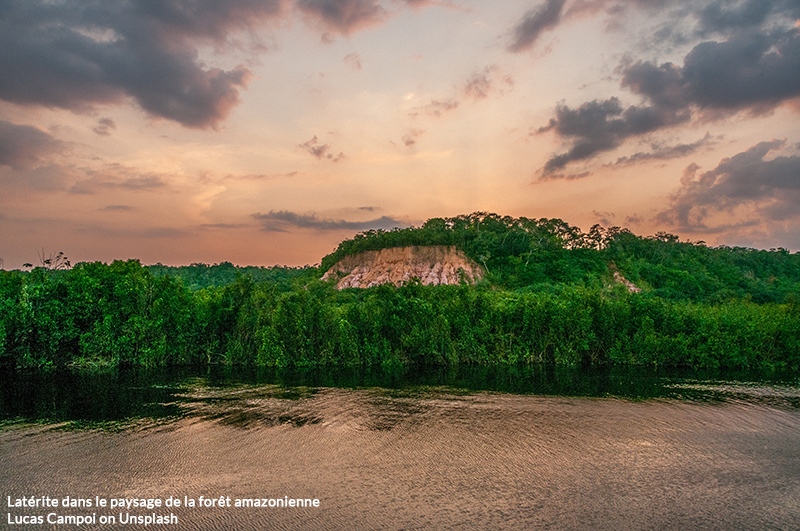REconstructing the influence of Climate change on lAterite formation
Financement
ANR 2017 (2018-2021)
Porteuse du projet
C. Gautheron (GEOPS)
Collaborations
S. Sepulcre (GEOPS), F. Haurine, C. Quantin (GEOPS), D. Calmels (GEOPS), R. Pinna-Jamme (GEOPS), G. Monvoisin (GEOPS), J. Nouet (GEOPS), J. Roques (IPN), T. Allard (IMPMC), G. Morin (IMPMC), E. Balan (IMPMC), M. Guillaumet (IMPMC), J. Bouchez (IPGP), C. Rollion-Bard (IPGP), P. Agrignier (IPGP), Z. Fekiacova (CEREGE), I. Basile-Doelsch (CEREGE), A. Guihou (CEREGE), B. Angeletti (CEREGE), J.-Y. Roig (BRGM), G. Aertgeerts (BRGM), M. Dall’Asta (TOTAL), J.-P. Girard (TOTAL), J. Braun (GFZ, Germany), A. Horbe (IG, Brazil), G. Bueno (LABOGEF, Brazil), L. Cherem (LABOGEF, Brazil)
Laterites are deep weathering covers of the critical zone that occupy 80% of the total soil-mantle volume of the Earth’s landscape and significantly participate to the global geochemical budget of weathering and erosion, and greenhouse gas consumption. Despite their factual importance on Earth surface, the timing of their formation and evolution in response to climatic and geodynamic forcing are still obscure. The originality of the RECA project is to combine chronometric, weathering and climatic proxies developed in the recent years in order to build a comprehensive and predictive scenario of laterite formation and evolution. We will concentrate our effort on geodynamically stable Guyana Shield and Central Amazonia regions, where laterites formed through the whole Cenozoic and can be associated with major geomorphological units. This ambitious multidisciplinary project proposes, for the first time, to perform absolute dating of lateritic duricrusts associated to five episodes of planation in the South American subcontinent. We will date mineralogically well-identified populations of iron oxides and oxyhydroxides (hematite, goethite) and clays (kaolinites) by using (U-Th)/He, (U-Th)/Ne and electron paramagnetic resonance spectroscopy, respectively. The inherent complexity of weathering materials, which may contain different populations of a same secondary mineral related to distinct stages of lateritization will be taken into account. The timing of duricrust formation will then be related to paleoclimatic conditions (temperature, rainfall) derived from a combination of geochemical or mineralogical indices and proxies: (i) at global scale, through, e.g., the known continental drainage curves; (ii) at a more regional scale through the intensity of weathering, the ratio hematite/goethite or O and H isotope systems of kaolinite and iron oxides and oxyhydroxides. We will also associate non-conventional Li, Si and Fe isotopic methods that will help to decipher the evolution of weathering processes linked to the various stages of laterite formation. Coupling weathering budget and the ages of weathering profiles will yield average weathering and erosion rates, allowing comparison with other weathering environments or paleo-environments at the Earth surface.
Interactions entre les différents processus (climat, géodynamique globale) œuvrant à plusieurs échelles de temps sur l’évolution des surfaces latéritiques du bouclier amazonien, dont la mise en place est estimée par différents géochronomètres ou traceurs géochimiques (datations Ar/Ar, 36Cl) Yu et al., Elements, 2015.


